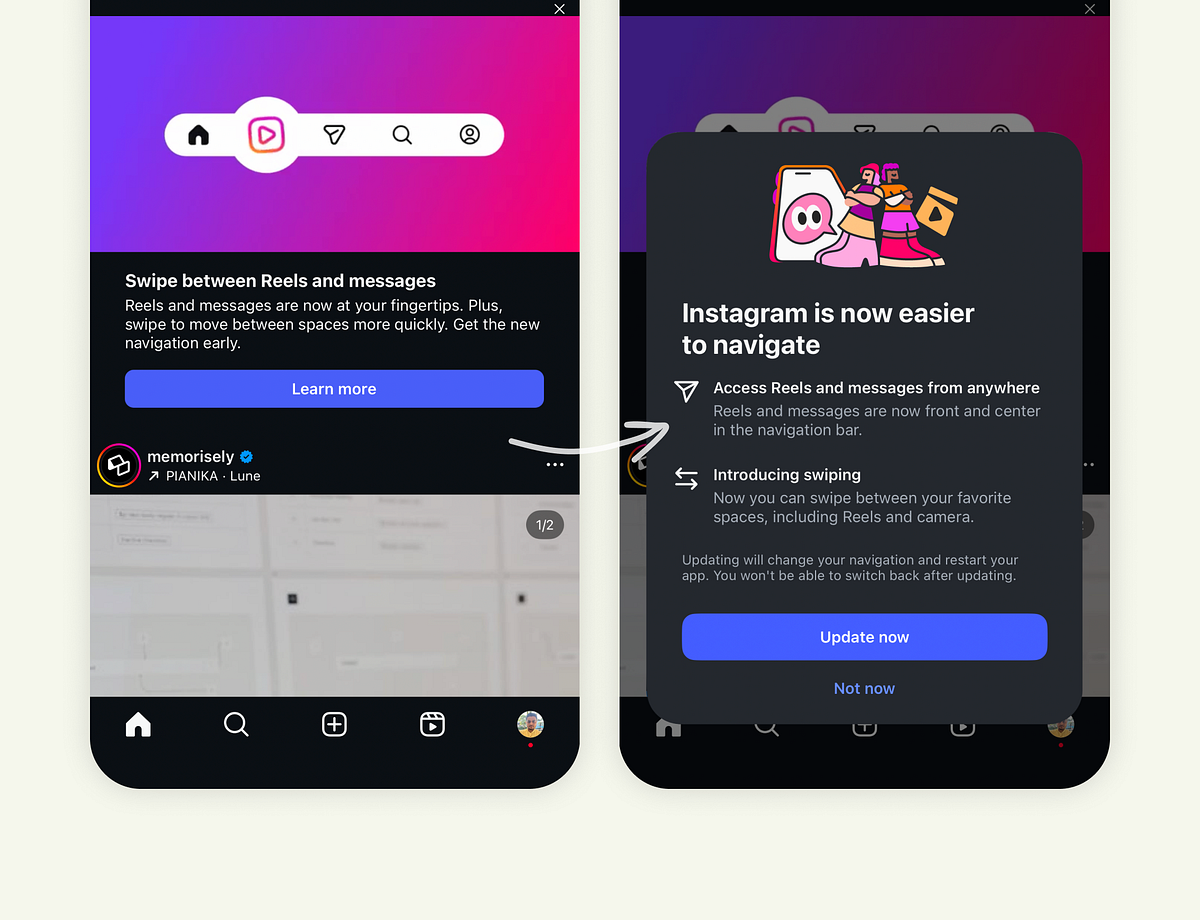
"If you've been using Instagram for a while, you know this isn't how they used to do things. In the past, updates just appeared. You'd open the app one morning and the navigation bar was different, buttons were rearranged, and muscle memory went out the window. No heads-up. No explanation. No sense of control. And the internet would explode with backlash."
"They Informed Users First Before changing anything, Instagram showed an announcement right inside the feed. "Swipe between Reels and messages." The banner explained the upcoming navigation update with a short sentence, a clean visual, and a "Learn more" button. It didn't interrupt your session. It didn't feel forced. It invited curiosity. That alone is a big shift in mindset, from forcing change to introducing change."
"Once you tap "Learn more," you're shown exactly what's going to happen next. The overlay breaks down two things: What's changing: Reels and messages are now front and center. Why it's better: You can access them faster and swipe between spaces. It's clear, visual, and to the point. Then comes the real UX gem - the choice. Two buttons: "Update now" or "Not now.""
Instagram introduced a navigation redesign that informs users before making changes. An in-feed banner labeled "Swipe between Reels and messages." provided a short visual explanation and a "Learn more" button that did not interrupt sessions. The "Learn more" overlay detailed what changes (Reels and messages front and center) and why it improves access, then offered users two choices: "Update now" or "Not now." After acceptance, the app applied the new layout immediately and presented a brief overlay demonstrating how to use the navigation. The combination of notice, explanation, choice, and post-update onboarding reduced friction and respected user control.
Read at Medium
Unable to calculate read time
Collection
[
|
...
]